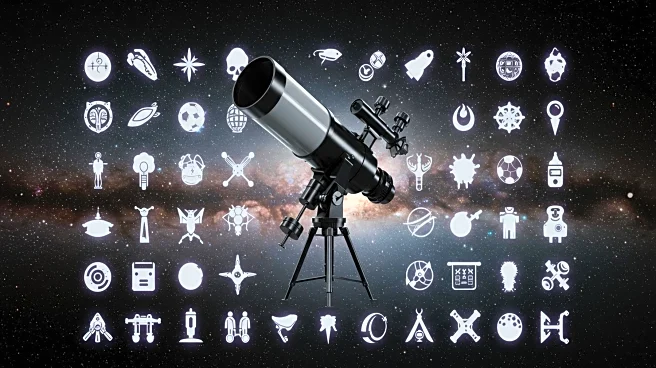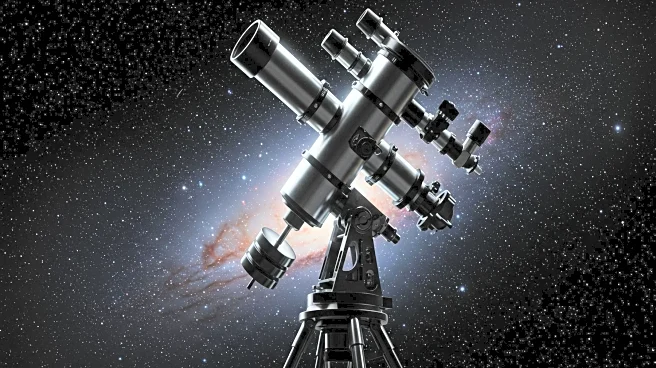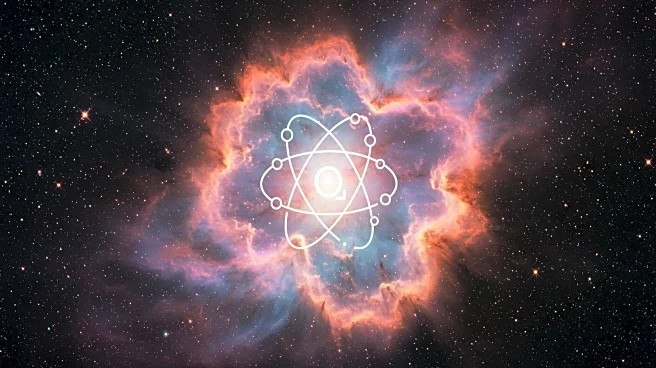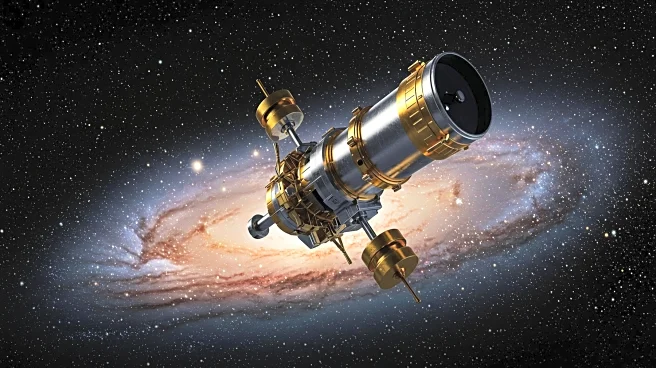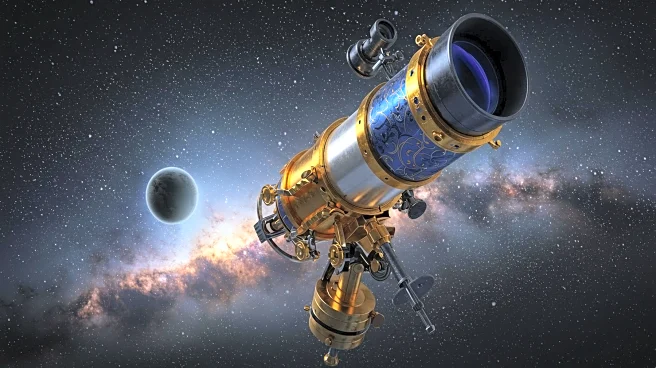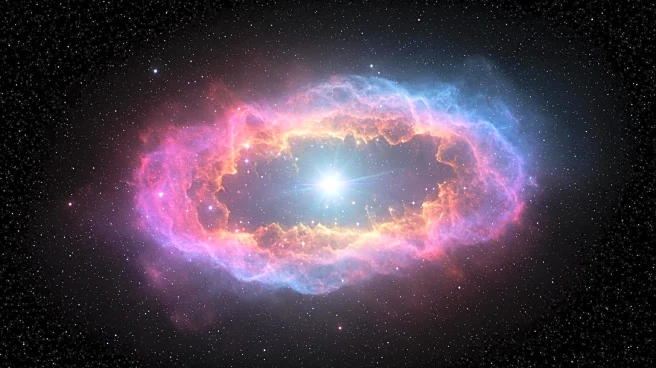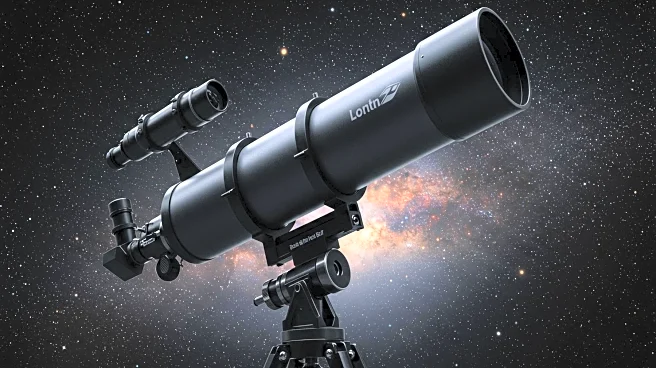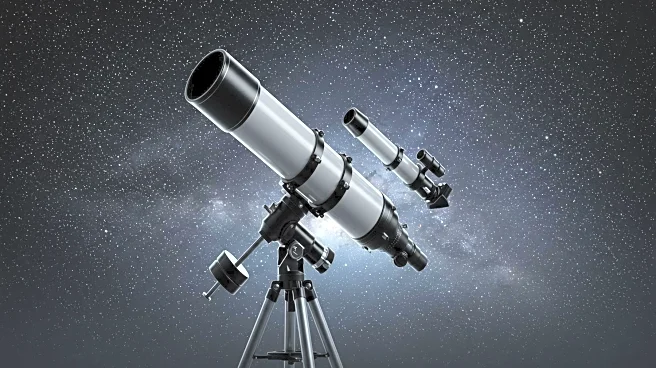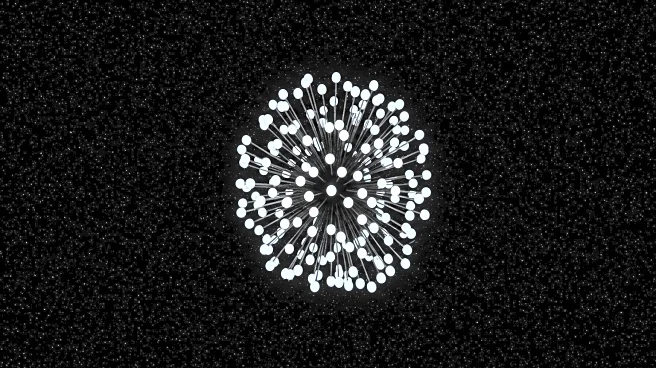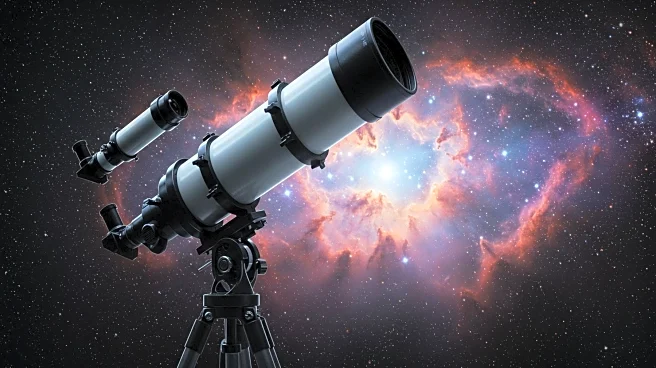What's Happening?
Researchers at the University of Missouri have identified 300 unusually bright objects in the early universe using deep-field images from NASA's James Webb Space Telescope (JWST). These objects, potentially early galaxies, shine far brighter than current models predict for galaxies forming shortly after the Big Bang. The discovery was made using the 'dropout' technique, which detects objects appearing in redder wavelengths but vanishing in bluer images, indicating extreme distance. The team analyzed the brightness across multiple wavelengths to infer redshift, age, and mass, utilizing JWST's Near-Infrared Camera and Mid-Infrared Instrument.
Why It's Important?
This discovery could challenge existing theories about galaxy formation in the early universe, suggesting a more active cosmic environment than previously thought. If confirmed, these findings may refine our understanding of how quickly the first cosmic structures formed and evolved. The implications extend to astrophysics and cosmology, potentially altering models of star and galaxy formation. The research underscores the transformative capabilities of the JWST, which has been pivotal in observing the cosmos since 2022.
What's Next?
Researchers plan to conduct targeted spectroscopic observations focusing on the brightest sources to confirm these objects as genuine early galaxies. This could further refine our understanding of the early universe's structure formation. Continued observations by JWST are expected to yield more insights into the universe's infancy, contributing to a growing list of discoveries that challenge existing astronomical models.
